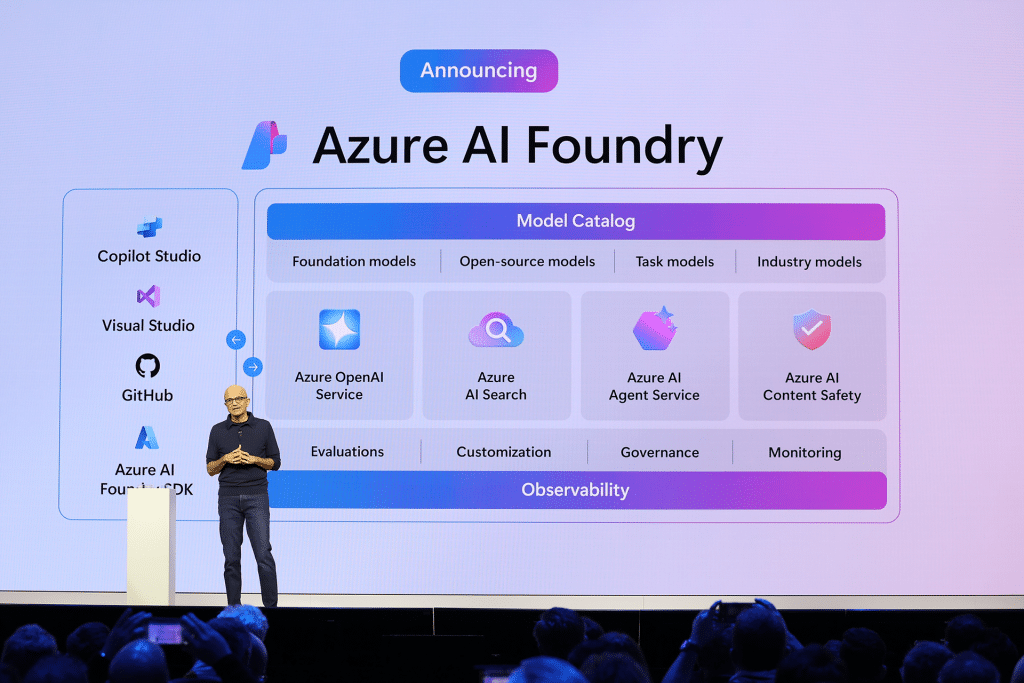Building Cloud-Native Applications: Tips and FAQs

There has been a major shift towards cloud-native application development in recent years. In fact, Gartner predicts that by 2025, over 95% of new digital initiatives will be deployed on cloud platforms — up from less than 30% in 2021.1 2
Demand for cloud-based systems has been especially high since the pandemic, analyst Paul Delory emphasises, stating:
“Businesses that successfully exploit cloud computing will have a competitive advantage, and it might even determine whether they survive.”3
Having a cloud-based application is important to meeting industry regulatory compliance requirements, streamlining operations, and improving customer experiences. And, when done right, investing in cloud-native technologies can be a cost-effective way to enable growth, reduce risk, and ensure that your operating systems are working to maximum efficiency.

Building cloud-native applications: FAQs
We’ve put together some of the most frequently asked questions for business leaders looking to invest in modern cloud-native applications.
In this guide, we’ll discuss what the process of building a bespoke application looks like, and explore how you can make sure you create an effective cloud-native application suited to your business needs.
FAQ 1: Do I really need to invest in cloud application innovation?
This question doesn’t have a one-size-fits-all answer. Whether or not you need to invest in new, cloud-native applications depends on a range of factors, including your company size, existing systems, long and short term goals, and more.
Scenario 1: You have a legacy system application
If you operate entirely through on-premise systems, the answer is likely to be yes; legacy to cloud migration is one of the most effective ways to improve customer experiences, boost operational efficiency, and take your business to its next level of growth.
Scenario 2: You have a cloud application
This question becomes harder to assess if your applications are already on public clouds or hybrid clouds. Your application may work reasonably well, and will be accessible across multiple devices, but may not meet all of your company’s needs.
If you only intend to use your application in the short-term, you may be best sticking with your existing cloud application. However, if you are hoping to build an application that holds up in the long-term and allows you to tailor the UX to match specific requirements, application innovation will be the best solution for you.
Scenario 3: You use SaaS or PaaS
Companies using Software as a Service (SaaS) or Platform as a Service (PaaS) solutions may similarly find that their application customisability and contractual allowances are limited. If expectations have not been clearly established during the testing and selection stages, a company might face extensive application downtime (depending on core SLAs), high customisation costs, and limited usability.
If your PaaS application was made using a tool like Power Apps, it may have inflexible UX that is only suitable for internal users in the short term. Your internal citizen developers aren’t always on-hand to keep the application running smoothly, so you may suffer from frequent downtime and receive poor feedback.
In these situations, it is up to you to evaluate how well your SaaS or PaaS solution is meeting your business needs, and whether you are achieving sufficient ROI.
How to assess the effectiveness of your application
To assess whether you need to invest in cloud applications, consider the following questions:
- Does your existing application slow operational efficiency?
- Are there significant costs associated with your existing cloud application services? Are these costs impacting your business?
- Is your development team and customer base expressing frustration at the usability of the application?
- Are you struggling to distribute development team resources based on customer and internal priorities?
- Does your SaaS or PaaS provider only offer limited customisability options?
If the answer to any of these is yes, then you will likely benefit from investing in long-term cloud-native architectures.
Suggested reading: If you want to find out more about the issues caused by legacy systems, check out our eBook: ‘Legacy Systems Are Costing Your Business Growth’.
Understanding the cloud application development market
If you’re looking to invest in cloud application development, it’s essential to first understand what solutions are available to you. We recommend considering the key attributes of cloud-native applications against your technical requirements, as well as exploring the potential benefits of power apps, custom builds, and SaaS solutions.
FAQ 2: How expensive is bespoke cloud-native development?
An estimated 66% of application software spending is expected to be directed towards cloud tech in 2025, up from 58% in 2022.4
While cloud-native application development is certainly the way forward, it won’t be suitable for every company. Small and local businesses, for example, are unlikely to have the funds or need for a cloud application built from scratch.
So how much does it cost to build cloud-native applications? This will, of course, vary depending on several factors, but will be especially affected by what your existing systems look like.
As a general rule of thumb, migrating from legacy systems to cloud applications will cost more, while moving from cloud to cloud will cost less. However, if a cloud-native application isn’t built according to your specific requirements, you may find yourself burdened with an expensive piece of technology that could severely affect operational efficiency.
The cost will also significantly depend on who has ownership over the source code, so make sure to take this into account when exploring your options. See our pricing page to learn more.
3 tips to stay within budget
- Choose a provider that offers a cloud development discovery phase or consultation. This will allow you to assess the scope and costs of your project, and gain information on what solutions are available within your budget.
- Opt for a bespoke, cloud-native application that is tailored to your needs. This will help you stay on budget as you will only pay for the services and features that are relevant to your company.
- Set a realistic budget for application innovation projects before any work starts and communicate it clearly to your technology partner. This will ensure your project stays within budget while maximising your ROI.
FAQ 3: Who would be involved in the development of cloud-based applications?
Cloud-based application development is notoriously difficult, meaning that many companies don’t have the in-house resources or skills to undertake development themselves.
It can also be difficult for in-house tech teams to communicate effectively with other departments while handling the heavy workload of application development. This can result in applications that don’t take key objectives into account, and may not function as expected.
Working with a tech partner is the perfect middle ground, allowing you to ensure the application fits your needs at each stage of the development journey.
Technology partners typically employ a wide range of specialists, who can develop your application in line with the necessary regulations and industry standards. These specialists will include everything from QA analysts to solutions architects, and each expert will have a role in ensuring the quality and efficiency of your application.
This team works alongside key stakeholders in your organisation to ensure that the final product meets all expectations and requirements. Technology partners will also make sure that the project scope is adhered to, allowing you and your staff to remain focused on day-to-day operations.
Suggested reading: Read our blog, ‘What Does Implementing Cloud Innovation Involve?’, to discover what your cloud application innovation could look like.
FAQ 4: How can I be sure that my application ticks all the boxes?
Developing custom cloud-native applications is a huge business and financial commitment. It’s important to make sure that your new application meets all of your specific needs, and make modifications where necessary; this is an essential part of the development process, and will ensure your application provides long-lasting ROI.
As you begin the development process, keep the following points in mind:
- Work closely with the development team: whoever is developing the application must have a clear understanding of what you’re trying to accomplish. Work closely with subject matter experts to ensure your application is meeting all required criteria.
- Take an agile approach: you should adapt your roadmap based on changes in business needs and the outcomes of demos.
- Follow a quality assurance process: Quality assurance checks should be utilised to ensure your application is meeting both functional and non-functional requirements.
- Employ continuous delivery: Iterative development processes and continuous delivery systems are both good ways to track whether your project is meeting deadlines.
Following these steps will help you produce an application that provides positive return on investment (ROI) from day one.
FAQ 5: What happens to my applications after they go live?
Launching your application after weeks or months of designing, discussing, and developing might feel like the end of a long journey — but it’s not quite over yet. The first few days and weeks after your application’s release are key to ensuring it is meeting user expectations and working as required.
It’s for good reason that cloud-based services are expected to grow by nearly 31% in 2023: like any complex IT system, cloud systems require regular maintenance to remain secure and functional.5
While some companies may choose to hire in-house management teams, this adds significant long-term costs that many businesses simply can’t afford. Hiring extra staff can create a lot of financial and mental stress, increasing strain on business team leaders as they seek to maintain strategic goals and business growth.
Look for a cloud application development provider that also offers managed application support. This will take the strain away from internal teams while ensuring you are getting the best results from your new application; a well-managed cloud application will be cost-effective, highly secure, and easily scalable.
Pro tip: Talk Think Do guarantees 30 days hypercare post go-live that helps to ensure your application is running smoothly in the critical first few weeks. Explore our application innovation page to learn more.
Key takeaways
- The first few weeks after go-live are key to assessing the performance of your application.
- A managed application support service will continuously monitor applications to ensure they are meeting business needs and functioning as expected.
- Opting for managed support can significantly improve the overall ROI of cloud-native applications, and can prevent costly system downtime.
2023 is the year to go cloud-native
If you haven’t already invested in a cloud-native way of working, you run the risk of being left behind by the competition in a rapidly evolving digital landscape: 2023 is the year to go cloud-native.
Talk Think Do provides bespoke cloud-native application development, designed to fit with the needs and goals of your organisation. We help you eliminate the risks associated with poor-fit applications and inaccessible legacy systems, while working within predefined budgets and timeframes.
Book a consultation with our experts if you would like to discuss your current application requirements and receive guidance on how Talk Think Do can help your business.

1 Gartner Says Cloud Will Be the Centrepiece of New Digital Experiences
2 Gartner Says Cloud Will Be the Centrepiece of New Digital Experiences
3 6 Steps for Planning a Cloud Strategy
5 Global Application Management Services Market to Grow at a CAGR of ~20% during 2022-2031
Get access to our monthly
roundup of news and insights
You can unsubscribe from these communications at any time. For more information on how to unsubscribe, our privacy practices, and how we are committed to protecting and respecting your privacy, please review our Privacy Policy.
See our Latest Insights
The platform for advanced AI apps in 2025
The recent announcements at Microsoft Ignite 2024, particularly the introduction of Microsoft Fabric’s SQL Database and Azure AI Foundry, present significant advancements that align seamlessly with our mission to deliver cutting-edge generative AI implementations for our clients. Enhancing Generative AI Implementations with Microsoft Fabric’s SQL Database The SQL Database in Microsoft Fabric is engineered to…
Customising Microsoft Copilot: Exploring Options for Tailored AI Assistance
If you’ve been following AI developments in 2024, Microsoft Copilot is a tool you’re likely already familiar with. Aimed at improving workplace productivity, streamlining decision-making, and optimising business processes, Copilot is being used by tens of thousands of people at an impressive 40% of Fortune 100 companies.1 While it’s still too early to tell what…
Evaluating AI Tools Using a Task-Based Framework to Optimise Productivity
We’ve all heard about how AI can improve productivity, boost work quality, and open doors to new business opportunities. But the reality is that these kinds of successful results rely on considerable preparation and careful implementation. According to recent surveys, 63% of respondents in successful businesses say that the implementation of generative AI is a…
Legacy systems are costing your business growth.
Get your free guide to adopting cloud software to drive business growth.




